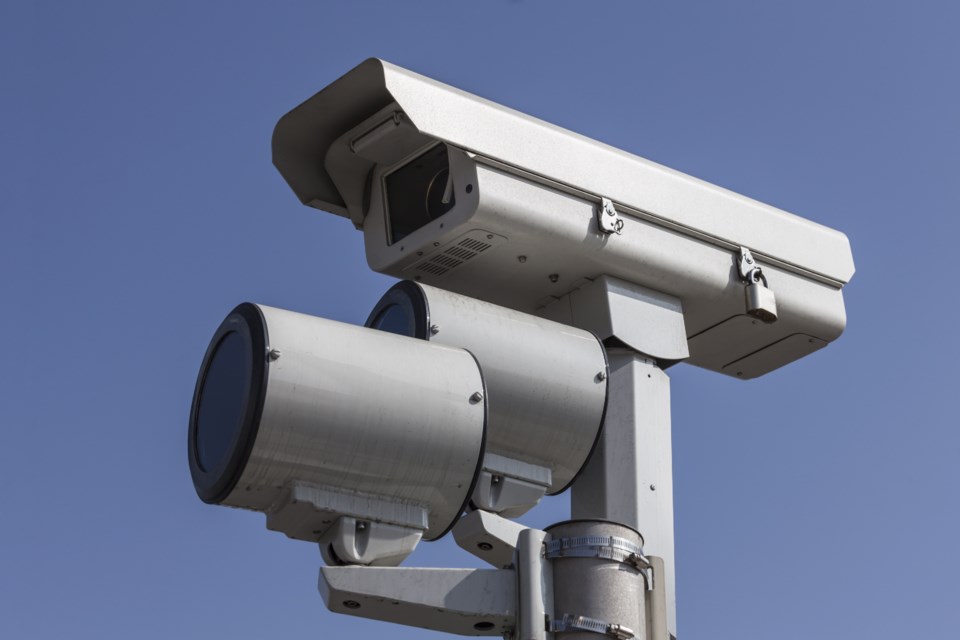Councillors voted Monday for more public consultation before committing to the system, a provincial program that uses sensors to automatically capture photos of drivers running red lights.
Images are sent to the Joint Processing Centre in Toronto for review, with tickets mailed to the registered owner of the vehicle. Fines for the offence run to $325, with a victim surcharge and court cost.
The camera program had reduced the number of serious accidents and fatalities in other Ontario cities where it was implemented, a review by city staff found. All 12 cities currently participating recouped program costs or made a profit through revenue from fines.
Council gave administration the go-ahead to pursue the program in January.
However, several councillors had second thoughts Monday when faced with a detailed report. For Mayor Bill Mauro, the province’s 10-camera minimum to join the program was an issue.
“I was a little enthusiastic about it [initially],” he said. “I thought there were at least a couple of locations where it might be appropriate… Given that we need 10, I’m not interested in supporting it.”
Instead, the mayor said he’d rather see the city spend the estimated $875,000 yearly cost to maintain the program on improving the city’s traffic light infrastructure.
However, others pointed out that investment would only be feasible thanks to estimated revenues of between $1.4 million and $2.2 million from red light camera fines in the first year.
Those revenues would decrease by about five per cent a year as drivers become more aware of the cameras, administration estimated.
Coun. Mark Bentz and others echoed the mayor’s call, however. Bentz argued the city’s outdated infrastructure was partly responsible for bad driver behaviour.
“This is what we’re creating with an inefficient traffic system that is not synchronized, that is cycling far too much,” he said. “It’s very frustrating.”
For Coun. Andrew Foulds, the program was worth the investment for the safety benefits alone.
A report from the city’s engineering division found red light camera programs led to an average 25 per cent reduction in right-angle collisions, which cause just over a quarter of all fatal road accidents in Ontario.
The same studies found the cameras also caused a 15 per cent increase in rear-end collisions. However, those are generally less severe and far less fatal.
The program’s likely ability to pay for itself made it even more appealing for Foulds, especially considering the investment would be made by those breaking the law.
“Regardless if there’s frustration or inefficient traffic flow, I’m not entirely sure we can pick and choose the laws we want to follow because we’re frustrated,” he said. “The rules are there for a reason.”
Coun. Shelby Ch’ng agreed.
“This is a really hard one to turn down, especially if there’s money on the table that’s essentially voluntary if people are breaking the rules,” she said. “This money can be funnelled back into the system that so badly needs an upgrade.”
Bentz raised concerns over that motivation.
“I’m not sure that pointing cameras at citizens for every move that they make is the right way to go as a society,” he said. “I have a problem with fining people to make improvements.”
Bentz also opined that with the 10-camera minimum, the city would have among the highest number of red light cameras per capita of communities in the program.
However, director of engineering Kayla Dixon reported the city had identified “far more” than 10 local intersections where red light cameras would bring safety benefits and pay for themselves.
Coun. Aldo Ruberto pointed out that even non-fatal right-angle collisions could cause years of physical, financial, and emotional damage.
The city report pegged the average social costs of an angle collision at $164,500.
From 2008 to 2018, the city saw nearly 25,000 accidents, of which 6,727 occurred at traffic lights. Of those, 1,269 were angle collisions and 3,121 were rear-end collisions.
“Safety’s the number one concern, and as Coun. Foulds and many others have said, it’s self-funding,” Ruberto said. “I don’t see the downside.”
However, Coun. Brian Hamilton spoke for several others who weren’t quite ready to commit, saying he’d like to see more public consultation first.
Councillors voted 8-4 to refer the issue back to city administration to conduct public consultation, with a requirement to report back by June 7.
The next opportunity to join Ontario’s red light camera program is for the 2022–2026 period.
